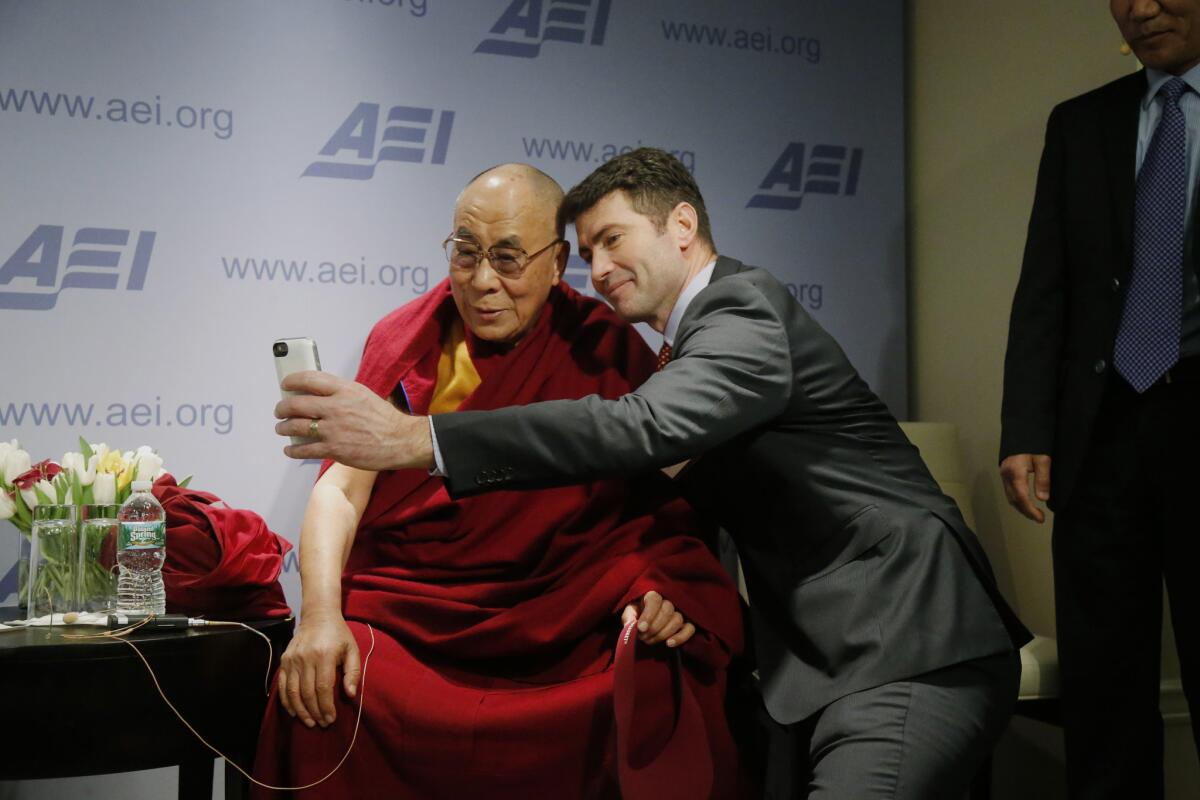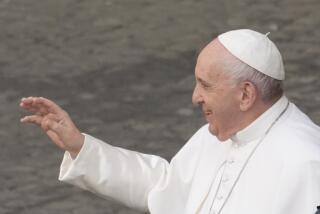Obama meets with Dalai Lama despite opposition of China

- Share via
WASHINGTON – President Obama welcomed the Dalai Lama to the White House on Friday, casting aside familiar objections from China in favor of a private conversation on human rights with the Tibetan spiritual leader.
The meeting was the third White House sit-down between Obama and the exiled Buddhist monk, and each has sparked condemnations from Chinese officials who have sought to diminish the influence of the 78-year-old Nobel Peace laureate.
Chinese authorities consider the Dalai Lama a separatist and have accused his supporters of “deceiving” people into setting themselves on fire to protest China’s control of Tibet. Shortly before the meeting, a spokeswoman for China’s Foreign Ministry warned that it would “severely impair China-U.S. relations.”
The White House was both somewhat sensitive to and dismissive of the rebuke. The official responses to the meetings have come to have a scripted feel. Both China’s statement and the White House’s response nearly echoed an exchange from the Dalai Lama’s last visit to the White House, in July 2011.
A White House spokeswoman stressed that the president was meeting with the world-famous monk in the Dalai Lama’s “capacity as an internationally respected religious and cultural leader.” The United States considers Tibet to be part of China and does not advocate for Tibetan independence, said National Security Council spokeswoman Caitlin Hayden.
The meeting was not open to journalists and only one photo was provided, taken by the White House photographer. As they did in 2011, Obama, in a dark suit, and the Dalai Lama, in his saffron robe, met in the Map Room of the White House, not the Oval Office, where foreign heads of state are typically received.
Still, the Chinese urged Obama to cancel the drop-by and accused him of interfering in their affairs.
“Tibet-related affairs fall entirely within the internal affairs of China, which allow no foreign interference,” Foreign Ministry spokeswoman Hua Chunying said in a statement. “The Dalai Lama is a political exile who has long been engaged in anti-China separatist activities under the cloak of religion.”
The White House said in a statement that the president expressed to the Dalai Lama his support for Tibet’s “unique religious, cultural, and linguistic traditions, and the protection of human rights for Tibetans in the People’s Republic of China.” Obama also praised his commitment to nonviolence and endorsed his “middle way” approach to resolving the long-standing dispute, the statement said.
The Dalai Lama has said that he is not seeking independence for Tibet but “meaningful autonomy for the Tibetan people that would ensure the long-term survival of our Buddhist culture, our language and our distinct identity.” He has long advocated nonviolent means of protest.
[Updated at 4:20 p.m. on Feb. 21: Meanwhile, Secretary of State John F. Kerry’s office announced Friday that he had named Sarah Sewall, the undersecretary of State for civilian security, democracy and human rights, to also serve as special coordinator for Tibetan issues. Her responsibilities will include working to “promote substantive dialogue between the Chinese Government and the Dalai Lama or his representatives,” the statement said.]
Tibet was invaded by Chinese troops in 1950, and China’s control of the region has long been one of the most sensitive issues for the communist country. In 2008, deadly clashes broke out between monks and authorities there. Since 2009, more than 120 Tibetans have immolated themselves to protest what they see as heavy-handed policies from the central government, which they contend are wiping out their customs and traditions.
Chinese officials say their policies in Tibet are aimed at bringing development and stability and raising standards of living. However, officials restrict the access of foreign journalists, diplomats and others to the region.
For decades, the Dalai Lama has been the spiritual guide of Tibetans, working from his base in Dharamsala, India. In 2011, he announced that he was giving up his role as political leader of Tibetans in exile.
The Dalai Lama’s stop in Washington was part of a speaking tour of the United States and his itinerary included one less predictable stop: The self-described socialist visited a conservative think tank for a discussion of morality in the free market.
The sessions Thursday at the American Enterprise Institute were eye-opening, the monk said with a wide smile, adding that he now has “more respect for capitalism.”
[Updated at 4:20 p.m. on Feb. 21: The Dalai Lama is also scheduled to appear next Tuesday at the Forum in Inglewood.]
kathleen.hennessey@latimes.com
Twitter: @khennessey
Twitter: @JulieMakLAT
Hennessey reported from Washington and Makinen from Beijing.
More to Read
Sign up for Essential California
The most important California stories and recommendations in your inbox every morning.
You may occasionally receive promotional content from the Los Angeles Times.















